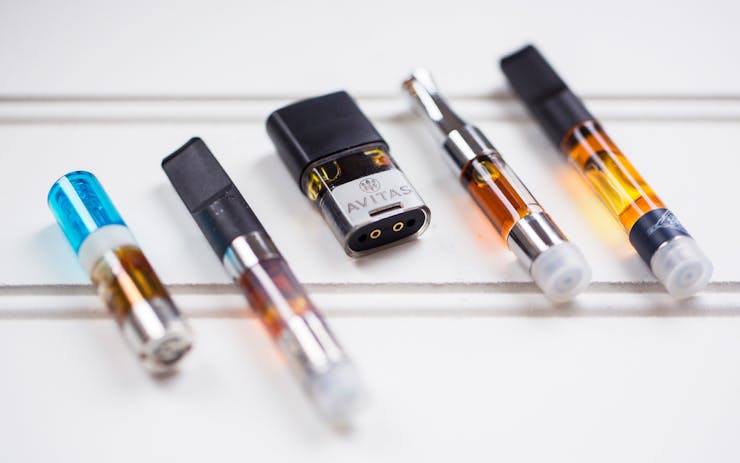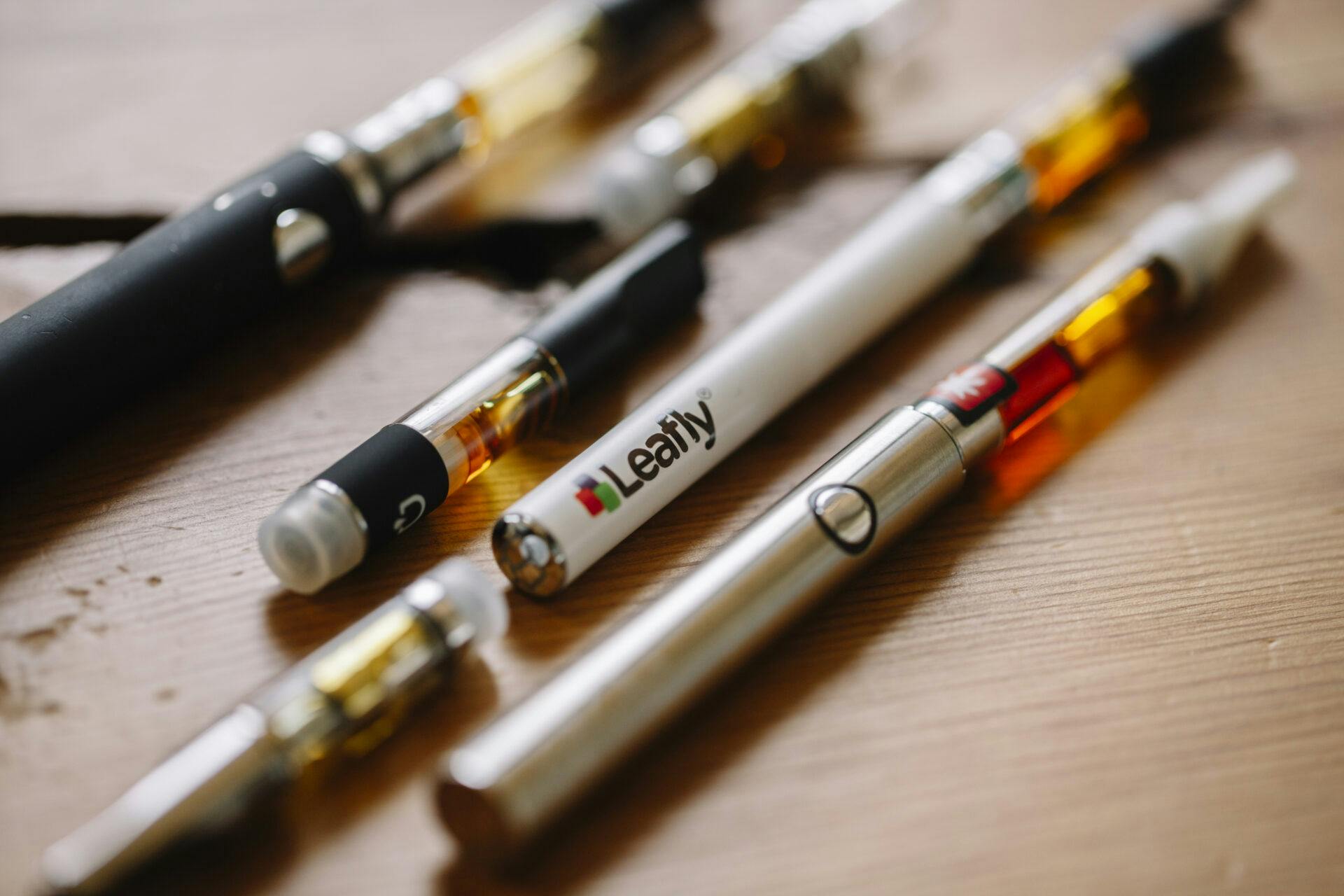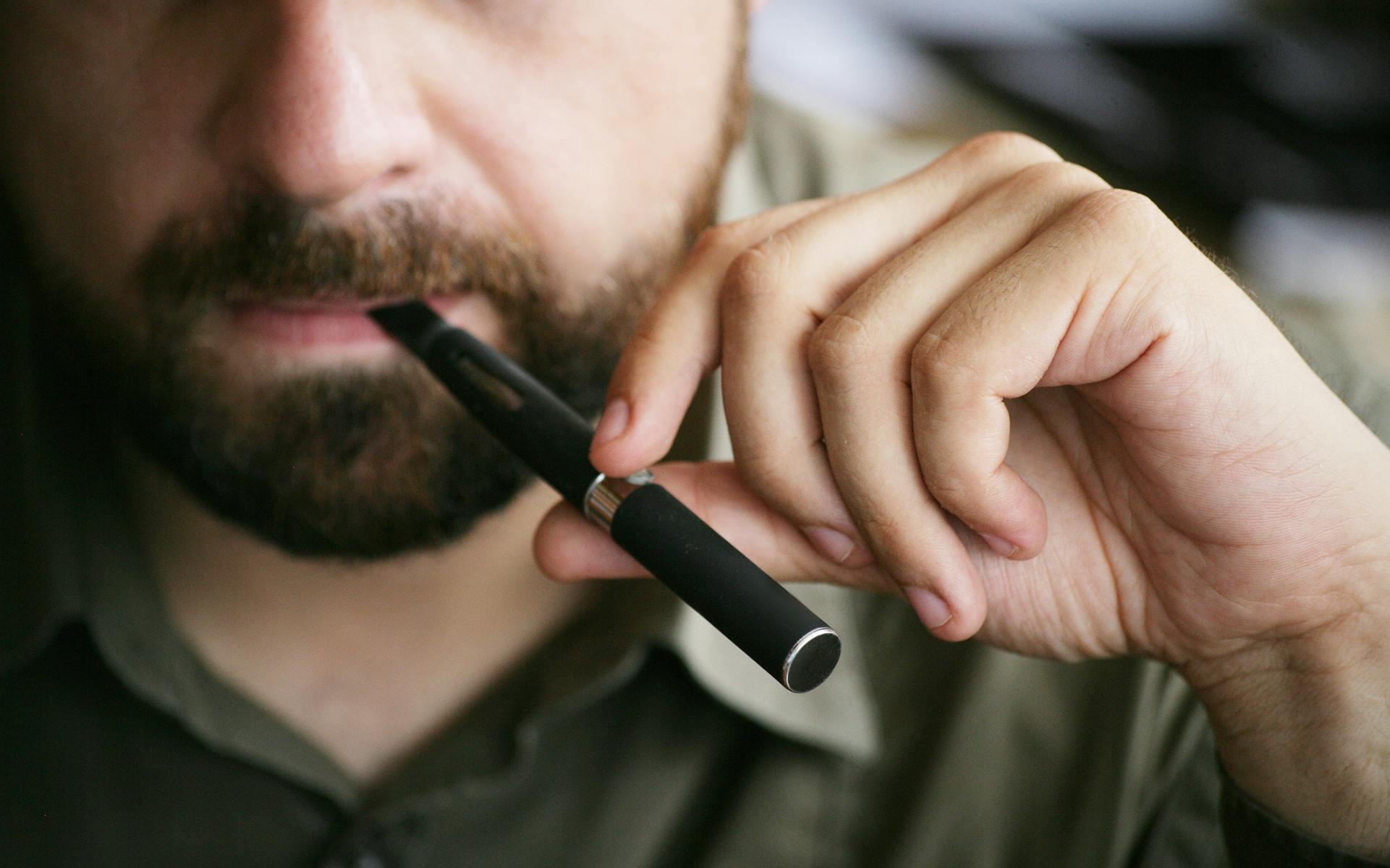Go to any dispensary in America and you’ll see one definitive trend: vape carts are muscling out flowers.
That’s right, sales of disposable cannabis oil cartridges that pair with a vaporizer battery are surging. Meanwhile, sales of raw, cured-flower buds—the kind that stink up your clothes—have flattened out.
But exactly how we talk about and buy vape carts is still pretty basic. We don’t have any of the vocabulary that flower aficionados have, let alone what a wine or cigar aficionado is expected to know.
If vape carts are going to dominate, how we scrutinize them is going to have to evolve.
We talked to some market-leading hardware specialists as well as oil and cart makers to better understand how to buy and review vaporizer cartridges. Leafly presents our findings as a series of questions for your budtender. Chances are, your budtender won’t be able to answer half of these questions, and that should set off red flags. The more they can answer, the better off you probably are.

Vape carts are taking over cannabis shelves, quickly outpacing consumer knowledge. (Leafly)
Vape Pen Vocabulary List
First, some vocabulary. A disposable vape pen consists of:
- a battery base, and
- a cartridge that screws onto it.
The cartridge consists of:
- a tank that holds the oil;
- a wick that delivers the oil to
- an atomizer, where a metal
- coil gets hot and boils the oil into the vapor you inhale.
This interplay of oil and hardware results in a quality experience or lack thereof.
Learn About ‘Source Strains’
What is the vape cart oil’s source strain?
Ideally either your budtender knows the strain and its lineage, or this info is stated on the package. Worst-case scenario, it’s so-called bulk distillate, also known as “hot dog water,” in reference to hot dogs, which come from a mix of slaughterhouse floor scraps and unsellable pig parts. In the cannabis world, that’s dirty, old, mixed trim from god knows where.
How was it grown, harvested, cured, and stored?
Ideally, it was sungrown or grown organically indoors. Normally after cannabis is harvested, it’s then dried and cured for weeks before extraction. It can also be “fresh frozen,” which means frozen when it was cut and extracted later. It’s OK for your budtender not to know this step in the process, but the best producers want to share this info.
Hardware expert Peter Hackett, who sources vapes in China as part of his company Transpring, makes a coffee analogy: Do you want Folger crystals or single-origin coffee from Whole Foods?
“Just like you consume food, focus on the rhetoric surrounding the process of growing. If they are trying to provide insight into the process, it means they have very persnickety, picky, scientifically educated people at their core,” Hackett said.
Ask About Extraction Methods
How was the vape oil extracted? Was it tested?
There’s a lot of ways to get cannabis oil. Liquid butane and liquid carbon dioxide are the most popular. Steam distillation and heat-pressing are more exotic. Each has its pros and cons. The main thing experts are looking for is aroma.
Shop highly rated dispensaries near you
Showing you dispensaries nearDid you take out the terpenes? Did you add them back in? Or did you add non-cannabis terpenes? Did you add any other flavors or additives?
The best carts contain pure, “full-spectrum” cannabis oil with all the plant’s cannabinoids and terpenes intact.
Chemistry, a leading vape cart brand in California, uses steam distillation to capture batch- and strain-specific terpenes. It adds the terpenes back into the mix later in the extraction. The best extracts pull out everything bad—chlorophyll, fats, and waxes—and leaves just the cannabinoids and terpenes. You want full spectrum cannabis oil, not some pure-THC distillate.
“You can’t mess with Mother Nature. She spent millions of years perfectly this bouquet of cannabinoids. To think you can use some artificial terpenes and compound those in a way that completely mimics a strain is not possible,” said Chemistry founder Trevar Mazza.
Vape carts are starting to get more fake flavorings and additives, too. No one knows the long-term health consequences of inhaling random flavorings or fillers like propylene glycol (PG) or polyethelyne glycol (PEG).
“That’s the first thing I would look for,” said Mazza. Chemistry oil contains no additives. “PG and PEG are the worst filling agents.”
“None of that is acceptable by any means,” said Shareef El-Sissi, maker of the leading Eden Extracts cartridge and pen, which is also additive-free .
Find Quality Vape Carts on Leafly Finder
Scrutinize Oil Quality
What does the oil in the cart look and smell like?
Ideally, it’s got a nice consistent color and is free of particulates or crystals. Debris means dirty oil. Crystals usually mean the cart got hot or sat on shelves for too long. Can you smell the oil? It might the cartridge is not well-sealed. Does it smell like weed, or fake flavorings? Look at the viscosity of the oil. Pure oil is pretty thick and viscous. If it’s really runny, it could be really good high-terpene sauce or really badly purged BHO or something with additives in it.
Inspect Hardware Quality
What is the cartridge made out of, specifically the wick and coil?
The best ones use metal housing, glass or acrylic cartridge tanks, and patented “CCELL” wickless coils.
The wick used to be crucial. It functions like the wick in a candle, pulling oil down through it to the atomizer. The newest cartridges do away with wicks, though.
“CCELL is probably the hottest atomizer on the current market,” Hackett said. “CCELL’s not going to come and go. It’s going to be completely generalized in the market.”
That’s because CCELL atomizers have bigger holes to allow thicker, more pure oil to flow through them. Plus, the oil is boiling off in ceramic pores instead of cooking on an exposed metal coil. Cheap heating coils are made of exposed heavy metals that can burn up in your vapor.
Cheap pens also have fiberglass wicks that gunk up and burn, creating carcinogens, which you also inhale. And cheap carts continue to use plastic tanks, which cannabis can degrade.
“Pure terpenes will consume plastic from the inside and completely destroy the container,” El-Sissi said.
All vape battery and cart hardware is made in China, primarily Shenzhen. If the hardware is low-cost, it’s because the factory skimped on quality control, and it may be more likely to fail.
Does It Have a Calibrated Battery?
Is the vape battery voltage calibrated to work with this cart and this oil?
The best brands calibrate battery to atomizer to oil viscosity to desired taste. “Just like Apple [computers]—software and hardware work in harmony,” said El-Sissi.
Most things in the vape world screw together using an industry-standard “510 thread,” but voltage is not standardized. Run too much juice through too tiny of a cartridge and it’ll burn—or fail.
Just because they fit together does not mean they go together.
“Frankensteining is probably one of the largest problems in the industry. It’s like selling engines without a properly matched battery,” said Hackett. “Just because they fit together does not mean they go together.”
Mixing and matching hardware—especially using variable-voltage batteries—is probably the best way to increase your odds of blowing up part of your face.
How Does It Draw and Taste?
The best ones work just by sucking on them, creating a nice pull and pleasant taste. Button-operated ones are trickier but can be just as high-quality.
You should like the taste of your oil. It shouldn’t taste bitter, burned, or sour. It shouldn’t burn your throat or make you hack out a lung. It also should have some character and not taste like generic, bulk distillate CO2 oil.
“The first hit and the last hit should taste exactly the same,” Mazza said. “Each hit should be robust and flavorful, and you should never get a burnt taste in your oil.”
A burnt taste comes from a cheap wick or another problem. The oil also shouldn’t taste like synthetic flavorings like bubble gum or really intense syrupy fruit. That indicates additives were used.
What Are the Effects Like?
How does it feel? Does it get you where you want to go?
Some pens have really low THC for newbies. Others have CBD for people who don’t want any high. That’s all fine, so long as they work as advertised. Pens can run up to 80% THC or as low as the 20s. You can bet the lower stuff is cut with fillers and additives.
“My favorite brands are focusing on the extraction side. Brands that emphasize high THC with no talk of the artisanal aspect, those are companies I tend to stay away from,” said Hackett.
Is It Long-Lasting or Sustainable?
How long will the battery last? Is it rechargeable, reusable, and/or recyclable?
Most cartridge batteries will last the lifetime of the disposable cart. Some can be recharged and reused with a new cart. Most aren’t recyclable in the traditional sense.
“It’s really terrible—all this glass and metal [that] manufacturers use is used once here and dumped into a landfill,” Hackett said. “There is no waste stream to properly put this product into.”
Try and vote with your dollars for manufacturer and retailer recycling programs. You can also ask city and county leaders for a cartridge recycling program.
Lastly, commit to staying current on vape tech and science. Cannabis vapes are running 10 years behind tobacco e-cigarettes, and the health data is just starting to come in.
Your Handy Vape Cart Quality Checklist
When assessing the quality of your vape cartridge, ask yourself the following questions:
- Single source strain?
- How was it grown?
- Dried, cured for a month?
- Full-spectrum extraction?
- No artificial flavors or fillers?
- Clean, consistent, tested oil?
- Metal battery base?
- Battery calibrated to cartridge?
- Glass tank?
- CCELL wick and coil?
- Non-metal mouthpiece tip?
- Easy draw?
- Great taste?
- Expected effects?
- Recyclable?
Are you satisfied with the answers? If so, you should be good to go!







